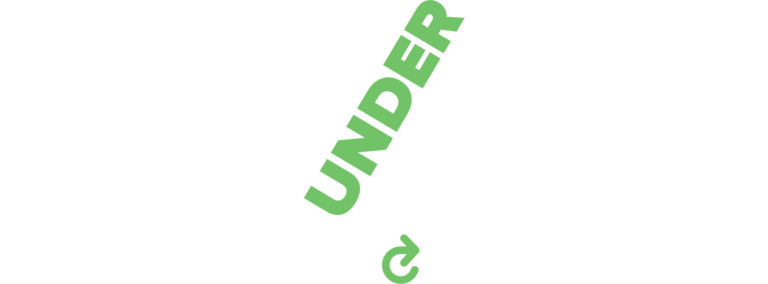
Innovation Lives Here
This year has brought a global pandemic, an uncertain economy, growing donor decline, and increased competition for philanthropic dollars. With all that, the future of higher education advancement must be bleak, right?
It’s not.
The future is brighter than ever, thanks to innovators like the people on EverTrue’s second annual 40 Under 40 list of the most influential young fundraisers working today.
Each honoree proved that 2020 is a time to pivot quickly, to try new things, and to put the needs of donors at the core of everything they do. They also showed that advancement isn’t going extinct. It’s being reinvented, led by some of the brightest minds and most forward-looking fundraisers in advancement today.
We asked you for nominations of who is at the forefront of leading the industry forward, and, wow, did you deliver. As you read about the 40 Under 40 winners and their impressive achievements and innovative outlooks, we think you’ll agree that the future of higher ed fundraising is incredibly bright indeed.
Picking our top 40 fundraisers under 40 years of age ended up being no small task. To do it, we looked specifically for a few certain traits.
Innovative
Forward-thinking and eager to undertake new projects and initiatives.
Impactful
Generate positive results for their institution while measuring and analyzing data.
Strategic
Always looking at the bigger picture and how projects fit into larger goals.
Passionate
Eager and excited about their work and the mission of advancement as a whole.
2020 Winners
Jacob Clifton Albritton, GiveCampus
Haley Ashley, Western Kentucky University
Ryan Bagley, The Jewish Theological Seminary
James Barnard, Univ. of Cincinnati Foundation
Lillian Bicchieri, Boston University
Nathan Clapham, University of Northern Iowa
Julie Craig, Kansas State University Foundation
Ashley Doherty, Sidwell Friends School
Julie Donohue, University of Delaware
Crystal M. Dunning, University of Louisiana at Lafayette
Ray Earl-Jackson, Northern Illinois University
Laurel Edson, The Thacher School
Devin Ferguson, Louisiana Tech University
Tommy Gallagher, St. Edward’s University
Cameron J. Hall, Texas Tech University System
Keith Hannon, Cornell University
Carrie Jordan, University of Virginia
Brittany Kicklighter, UNC Charlotte
Heather Kopec, Virginia Tech
Christi Lumiere, Bowdoin College
Ryan Marshall, Concordia University, St. Paul
Brittney Miller, Charles R. Drew Univ. of Medicine and Science
Maria Ochoa, West Point Association of Graduates
Mike O’Brien, Boston College High School
Sarishni P. Patel, Florida State University Foundation
Jessica Robertson, University of Virginia
Ellen Roof, University of Notre Dame
Kendra Saldana, Cornell University
Caitlin Schile, Butler University
Amanda Schmidt, Northern Arizona University
Alex Spady, University of Oregon
Jodie Sperico, Adelphi University
Kellie Sullivan, The University of Texas at Austin
Leanna Swart, Austin College
Nicholas Teff, University of Iowa
Anthony Thomas, New York University School of Law
Amber Turner, Purdue Research Foundation
Jason Vaughan, Union University
Kim Walz, University of Central Florida Foundation
Jennifer Welsh, Siena College

Jacob Clifton Albritton
Content Marketer, GiveCampus
(formerly at Emory University)
What are you either working on now or have recently(ish) wrapped up that you’re most proud of?
I am most proud of my work in helping Emory University launch its digital engagement team. As the first digital engagement officer, it was fun to watch the idea go from a concept to a team of five people doing this important work. The idea came from the fact that outside of our major markets, our alumni weren’t receiving the attention they needed or deserved. We created a team that is focused on providing consistent, valuable, and personalized outreach to alumni in smaller markets to increase engagement and activity in those areas. This was implemented using virtual visits and utilizing EverTrue to identify themes and ideas to best serve those communities. I like to think of us as concierges—helping alumni connect with Emory no matter where they are located. Especially in times of COVID-19 and beyond, I think this is an important step for all colleges and universities to take—meeting their constituents where they are.
What do you think is (or should be) the next big step forward for the fundraising industry?
I believe the next big step in the industry is leaning into digital engagement/gift officer programs. With the challenges currently facing the industry due to COVID-19 and the current state of the economy, now more than ever we need to provide personalized fundraising journeys for donors at scale. With the advances in technology, we can reach so many more constituents than ever and make them all feel important, especially our leadership annual givers. While some of us were forced to move our operations digital, I believe we should lean into this and look at this as an opportunity to improve the experience of our constituents and donors.
On the flip side, is there anything you believe the industry needs to fundamentally rethink or move beyond?
The fundraising community needs to fundamentally rethink how to attract more diverse fundraisers, especially Black, Indigenous, and people of color. According to Data USA, a partnership between Deloitte and Datawheel whose mission is to help people understand and visualize critical issues facing the United States in areas like jobs, skills, and education, in 2018 White individuals made up 82.7% of the entire fundraising field. Yes, you read that right. The next highest groups represented wee Black individuals with 6.09%, followed by Asian individuals at 3.3%. These numbers are alarming to me, and I hope they are to you too. When I first got interested in fundraising, it was hard finding someone who looked like me to talk to about their experiences in the field. This struggle has continued in my professional life. The constituent base we serve as fundraisers is getting more diverse each year. What message are we sending to students and alumni when they do not see anyone who looks like them helping to advance the mission of their alma maters? What message are we sending to people who are interested in our field but see the lack of representation? I hope that all of us will hold our institutions accountable for creating a more diverse and equitable workplace. These numbers MUST change, and that change starts with us.
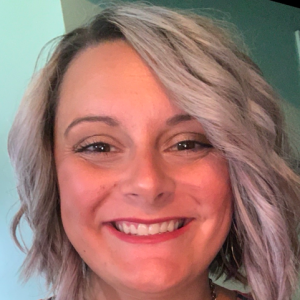
Haley Ashley
Donor Experience Officer
Western Kentucky University
What are you either working on now or have recently(ish) wrapped up that you’re most proud of?
I absolutely love the work that I get to do at WKU. I get to connect with fellow Hilltoppers and be a resource to them as they so generously support our students and programs. The new DXO program at WKU has helped me to connect with new Hilltoppers and maintain relationships with alumni I already knew. I am currently working with an alum that I met about a year ago. Last summer she mentioned that she had thought about endowing a scholarship and had mentioned it to WKU several years ago. She was now retired and more seriously considering the opportunity. I shared some information she requested and told her we would stay in touch until she was ready to move forward. Fast forward to this summer, and she is ready to establish guidelines and make her gift to start her scholarship that will leave a legacy for her at her alma mater supporting students in the same area she studied. She has also put provisions in her estate plans to benefit WKU and her scholarship. Moving forward on this gift and hearing the alum talk about her experience has just been a full-circle experience. I love my job and the amazing people that I get to work with. I’m just doing my part to help philanthropic Hilltoppers make a difference and leave a legacy. I also love the photo that I have with a donor from earlier in the spring when I picked up a check off of their porch so that they could make their annual gift and stay safe. Fundraising in a pandemic—there are so many great stories I could tell, and it’s not about me at all. It’s the stories that I get to help others tell.
What do you think is (or should be) the next big step forward for the fundraising industry?
I think that we at WKU are on the front lines of the next step forward in our industry. Higher education and advancement are notorious for “doing things the way they’ve always been done” while the rest of the world cruises on by using technology and innovation. I think that our DXO and SDXO programs are the examples of fundraising of the future. Providing a first-class experience for every single donor and alumnus that supports and engages with our institution is amazing to be a part of. I’ve worked the old way too, and I hope that our alumni can see a difference in the months/years ahead.
On the flip side, is there anything you believe the industry needs to fundamentally rethink or move beyond?
People have so many choices of who/what they can support, but dollars are so hard to come by. In turn, those dollars that people give us are precious to our organizations. I think with a new generation of donors coming into play, the way that we connect, engage, and communicate with them should be different. I think that we should pay attention to our constituents and help them to understand and realize the role they play in advancing our organizations.
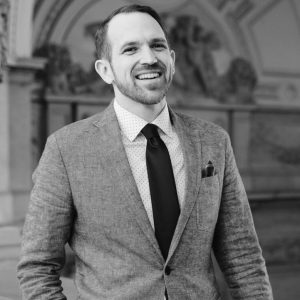
Ryan Bagley
Senior Director, Advancement Services
The Jewish Theological Seminary
What are you either working on now or have recently(ish) wrapped up that you’re most proud of?
Transitioning to a new position during COVID-19 has been both challenging and exciting. JTS has been on the same database since 1998, and I know there are data treasures to be found. Recently, I hired the institution’s first data analyst, who programmed a library of data integrity reports for us to scrub data. At the end of the day, if I have done nothing else, I have cleaned up a pile of dirty data!
What do you think is (or should be) the next big step forward for the fundraising industry?
University development shops need to be as nimble with financial transactions as the private sector: a paperless, virtual experience that still evokes passion and a relationship that donors and institutions seek and rely on.
On the flip side, is there anything you believe the industry needs to fundamentally rethink or move beyond?
Data. Leadership needs to understand the valuable asset that they have and dedicate the resources to ensuring that it is properly managed, secured, and updated.
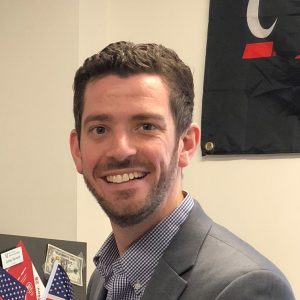
James Barnard
Executive Director, Annual Giving and Marketing
University of Cincinnati Foundation
What are you either working on now or have recently(ish) wrapped up that you’re most proud of?
This is a pivotal time for advancement. Last spring/summer we did some amazing work raising emergency funds for our students and our hospital. I’ve never been more proud to work in the profession than during those critical times. Since then I have been focused on launching two innovative programs that are essential to our success: Telefund 2.0 and a plan for emerging and mid-level donors. I believe that personalization is paramount to fundraising—people give to people. Creating programs that provide a highly personalized experience for a large group of donors is going to be what takes us from good to great.
What do you think is (or should be) the next big step forward for the fundraising industry?
The next step for us is the seamless integration of technology, community-building (engagement), and smart fundraising. The way we approach our work and the way we use our toolkit is changing. We’ve worked in silos for too long, even for the relatively simple exercise of asking a donor to make a gift. It’s time to create personalized donor journeys that lead to a sustainable pipeline of support.
On the flip side, is there anything you believe the industry needs to fundamentally rethink or move beyond?
We need to move beyond an organization-centric mindset. It’s not about us. It’s not about org charts and reporting lines. It’s not just about what we need and want. It’s about the people we’re asking to help us. It’s about their interests and passions. It’s about finding common ground between our vision and theirs. When I meet someone new, I don’t say, “Let me tell you about me.” Instead, I say, “Tell me about yourself.”

Lillian Bicchieri
Associate Director of Alumni Relations
Boston University
What are you either working on now or have recently(ish) wrapped up that you’re most proud of?
At BU Law, we’ve always had Reunion Committees, but we have a growing number of folks who want to stay engaged with their classmates in between reunion cycles. So, we launched a one-class pilot of a Class Agent program in December of 2019. I really had full artistic license with the new program, so I worked with our inaugural class agent to build something step-by-step, that was new, nimble, effective, and fun. Email open rates and event participation immediately improved; the new class Facebook group was on fire with classmates posting favorite law school memories; and we held a group dinner for the class in February that was a big hit. It was all going swimmingly, and then covid crashed the party. But, instead of putting the Class Agent program on hold, we realized that because of the newness and flexibility of the program, we could shape it to become the engagement method that would carry us through the early stages of remote life. So, we started asking members of specific classes if they would consider “hosting” virtual happy hours for their classmates. We sent out class-specific updates from the “host” with creative, unique subject lines and content. We got class-specific with our communications and appeals.
The “building the bike as we ride it” approach of our Class Agent program ultimately lined up perfectly with the huge shift that we’ve all been collectively weathering since March. Covid has demanded nimbleness and adaptability, and the Class Agent program has been our alumni engagement tool that fits the times.
What do you think is (or should be) the next big step forward for the fundraising industry?
I think the next big step forward will be a change in mindset. Higher ed has been around for a long, long time, and the “this is the way we’ve always done it” approach is in big supply at our institutions. That approach is slow and frustrating, especially if you’re on a lean, mean team (shoutout to school-based folks!) that has a lot of varied work to do with very few resources. I can say from experience that nothing beats the drive, grit, and energy that pulses through the team at a tech startup. At a startup, process and procedure can be set aside in the name of what’s best of the company and its customers. The boundaries of job descriptions are willingly blurred so that the team can be all-hands-on-deck when it’s needed. The result is work that’s more collaborative and creative, and therefore, more fun. This year, our whole worlds have changed discernibly in a short period of time, and many private companies (and smaller non-profits) have quickly changed their work styles, communications, and guiding principles in response to it. I really believe our success and survival as development and alumni relations professionals for higher education institutions will depend on how whether we can adopt the nimble, resilient, gritty startup mindset and start hurdling over the red tape. We simply have to get flexible, creative, and adaptable with all of our work approaches if we want to stay relevant in the minds and hearts of our alumni and donors. So, I believe the next big step forward will be a move towards the startup mindset. It can be less comfy, but it leads to creativity and collaboration, which are the two things that will keep us afloat.
Where do you get inspiration for your work? Other advancement shops? Private businesses doing interesting things? Something crazy we’ve never heard about?
These days, I get all of my inspiration from surfing. When you’re out on the water on a stormy day and a huge wave is coming toward you, you can either paddle calmly and quickly to get out past it, or you can turn toward shore and prepare to ride it in. Either approach requires you to be calm, make a split-second decision, and then put in your best effort. If you freeze, thrash around, or bail out, you’ll pay for it.
In these unprecedented times, we all are out there on the stormy water. Our work lives, our home lives, our social lives, they’re all completely different than they were six months ago. I have been using the lessons that surfing teaches me to keep giving each challenge my best gut assessment and then my best effort. And if I get churned up (and I definitely do from time to time), then I just take a few deep breaths and try to calmly get back out there past the break.
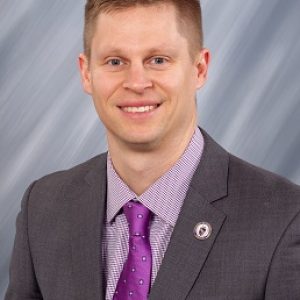
Nathan Clapham
Assistant Vice President for Collegiate Development & Annual Giving
University of Northern Iowa
What are you either working on now or have recently(ish) wrapped up that you’re most proud of?
I’m currently the project lead for the renovation and expansion of the Gallagher Bluedorn Performing Arts Center on campus. As the project lead I help facilitate the fundraising efforts, constituent engagement, communication, and stewardship. It has been a great experience bringing those different areas together to help raise the money to renovate the Gallagher Bluedorn Performing Arts Center. One of the things I enjoy most about my job is collaborating with various units in Advancement and across campus. This project has truly been a team effort!
What do you think is (or should be) the next big step forward for the fundraising industry?
How the industry embraces and adapts to technology will be a critical component for success in Advancement divisions moving forward. There are so many options and advances in technology that it’s hard to exactly know which area to invest in. I think the key will be keeping the focus on donor-centric approaches that provide proof that a donor’s philanthropic gift is making a difference. Technology can often make things more transactional. From an annual giving perspective, how do we utilize technology to make things easy for the donor, but not make it feel like a transaction? From a major gifts standpoint, time is always the thing we need more of. We need to find ways to use technology to make sure we are spending our limited time with the right prospective donors.
On the flip side, is there anything you believe the industry needs to fundamentally rethink or move beyond?
We need to fundamentally rethink how we are building our base of donors. The top of the pyramid is critical and gets most of the attention at our institutions, but almost all of those individuals begin their journey at the base of the pyramid. The base of the pyramid is eroding. This may not create challenges now, but it will create challenges 20 years down the road as fewer donors move to the top of the pyramid. This isn’t just a higher education challenge. Fewer people are participating in philanthropy at any level. We need to give serious thought to how we communicate, engage, and invite donors to begin their philanthropic journey with our organizations.

Julie Craig
Senior Director of Prospect Analytics & Research
Kansas State University Foundation
What are you either working on now or have recently(ish) wrapped up that you’re most proud of?
We’re on the verge of many exciting advances this year as we bring a data science and marketing research focus to the creative brilliance of those who share our stories and funding opportunities. In-house personas, tracking interests, cataloging compelling content, and showcasing impact will allow for personalized donor journeys. Why? To provide rewarding philanthropic experiences and ensure the future of our pipeline.
What do you think is (or should be) the next big step forward for the fundraising industry?
Relationships go both ways. We know how valuable donors are to us, but what value are we offering them? Why should they engage, much less invest in our causes? Showcasing the effects of their gift is also key—how did they change a life with their gift today? Highlighting this impact will help ensure sustained fundraising.
On the flip side, is there anything you believe the industry needs to fundamentally rethink or move beyond?
The excuse of not being a private company has to subside. Moving beyond traditional fundraising barriers to adopt new mindsets and technology, while also elevating the donor experience, will be imperative for the industry to move forward.

Ashley Doherty
Assistant Director of Annual Giving
Sidwell Friends School
What are you either working on now or have recently(ish) wrapped up that you’re most proud of?
With the cancellation of our annual auction because of COVID-19, we had to get creative to recoup the $250,000 that would be lost. We created our first-ever giving days and ended up raising nearly $480,000. I’m particularly proud of this because we tried something new, engaged all constituencies (alumni, parents, former parents, faculty and staff, and former faculty and staff) and I was able to secure some significant leadership gifts from donors who had generally been mid-level. All around a feel-good 48 hours.
What do you think is (or should be) the next big step forward for the fundraising industry?
I know we all talk about being donor-centric, but I feel like we are moving too far in that direction. It is important for philanthropists to be heard, but I think it is equally important to have candid conversations about what your organization really needs. I hope we can start being more candid about how important general operation expenses are. I know they aren’t particularly exciting, but I think being transparent with donors about how necessary unrestricted dollars are will resonate with individuals who are truly philanthropic. The next big step is being forthcoming about what the true needs of your organization are, and how this donor can make the largest impact with their dollars.
Where do you get inspiration for your work? Other advancement shops? Private businesses doing interesting things? Something crazy we’ve never heard about?
I’m inspired by a mix of things, but primarily my colleagues and our community. If you go out there and listen to what other staff members are talking about, or to parents and alumni, they tell you what they want to hear.
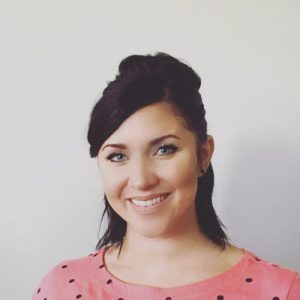
Julie Donohue
Associate Director, Annual Giving
University of Delaware
What are you either working on now or have recently(ish) wrapped up that you’re most proud of?
I am always proud of UD’s annual I Heart UD Giving Day. I Heart UD Day started out a few years ago as a day for students to show their love for the university and learn about student philanthropy. Three years ago we turned it into something bigger and better, which extended from the campus to worldwide by adding the giving day component. The first year we smashed our goal of 1,743 donors with over 2,300 donors and raised over $300,000. The following year we raised over a million dollars and had over 5,000 donors. This year we had to be super flexible and work on our toes to be able to flip our focus to make sure I Heart UD Giving Day was still successful but relevant to what is going on in the world. Instead of focusing on student groups and campus-wide projects, our focus was on critical student needs. It was still a successful day filled with UD pride and love.
What do you think is (or should be) the next big step forward for the fundraising industry?
I always try to be be future-focused. The most important thing to take a big step forward is giving with ease (when Venmo is available to nonprofits and higher ed). The easier it is to give, the more gifts we will see come through.
On the flip side, is there anything you believe the industry needs to fundamentally rethink or move beyond?
I think being scared to take chances is something that the industry needs to move past. Less serious letters and more fun, creative, and uplifting messaging. The world needs more fun.
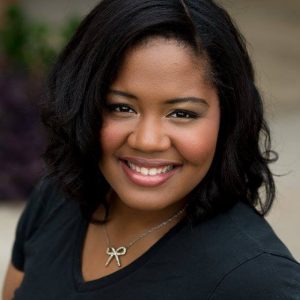
Crystal M. Dunning
Assistant Director of Annual Giving
University of Louisiana at Lafayette
What are you either working on now or have recently(ish) wrapped up that you’re most proud of?
Re-imagining our Phonathon has been one of my biggest projects, and it’s been a ton of fun. When UL Lafayette recognized that their outsourced calling program wasn’t yielding the results they wanted, they decided to build the program in-house. I work with our Student Philanthropy Ambassadors (aka Student Callers) to connect with alumni and donors in ways that “meet them where they want to be met.” We’ve incorporated texting into our efforts, and we are really excited to add ThankView to the mix this year. We’re also seeing that we can provide our annual giving donors with meaningful stewardship by thinking outside of the box. My favorite example of this is from #GivingTuesday in 2019. We had a segment specifically for FY20 donors, and we sent them a stewardship message instead of a solicitation. The message read, “Today’s #GivingTuesday, and we want to give thanks. Thank you for supporting our university.”
It was our small way of showing that #GivingTuesday is about more than just asking for money; it’s about generosity…the generosity of time, resources, words, and more.
What do you think is (or should be) the next big step forward for the fundraising industry?
I think the next big step for fundraising, specifically higher education fundraising, will be determined by the changing value of a college degree. I also think that 2020 has forced us to evolve quickly, and now that we know we can adapt technologies, strategies, and new processes quickly…well, we can’t go back. I think the phrase, “Let’s wait on that for a while” will forever be challenged by the question, “Why?” {Side note: I completely understand that sometimes you have to wait, but it never hurts to understand why you’re waiting.}
On the flip side, is there anything you believe the industry needs to fundamentally rethink or move beyond?
Investing in our fundraisers…Is that too bold to say?! I think the turnover rate in fundraising affects the quality of the donor’s relationship with the university. In a recent EAB presentation, “Maximizing Fundraiser Efficiency,” they stated that the average tenure for a major gift officer was roughly 2.8 years, AND this turnover leaves fundraising dollars on the table. (EAB mentioned that the tenure is even shorter for younger fundraisers.) If our goal is for donors and alumni to have a meaningful and philanthropic relationship with the university, the people developing, managing, and enhancing those relationships have to understand the voice and culture of the university or organization. Of course, certain skills transfer, and seasoned fundraisers might have an easier time adjusting, but a loss of $647,000 seems preventable. I’m not sure how we fix the issue, but maybe it starts with asking questions: Why are people leaving their current role? (Are they leaving the fundraising profession, or just their employer?) What roles are experiencing the most burnout? Are people able to do the jobs they were hired to do?
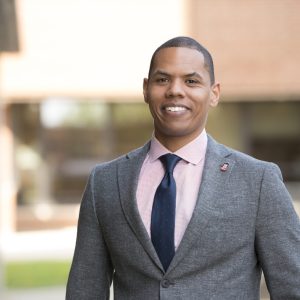
Ray Earl-Jackson
Executive Director, Advancement
Northern Illinois University
What are you either working on now or have recently(ish) wrapped up that you’re most proud of?
Currently, my team is focused on being a high ROI team that provides the most fulfilling donor experience possible. We are working toward this by utilizing our tools/resources (EverTrue!) to identify who are the “right” people to engage now and how to match their passions and interests to our goals at NIU. We are working throughout the division and campus to dive deep into the donor experience at every level and identify where/how we can improve. It’s so much fun, and I’m grateful to have incredible teammates who are always striving for us to be better for our donors, students, and the greater Huskie community!
What do you think is (or should be) the next big step forward for the fundraising industry?
How can we be donor obsessed with the resources we have available to us? In my opinion, when we develop true partnerships with donors, this is what will move us toward our visions. It can be difficult to figure out what this looks like at every donor level but we have to figure it out. I also think we need to continue to improve on our development of young advancement professionals. I am probably a member of the first generation to choose advancement as a profession rather than “fall into it.” This is great progress, and I think the more programs we create to teach the art and science of the job with a donor-centered focus, they will lead to better experiences for our donors and more impact for society.
On the flip side, is there anything you believe the industry needs to fundamentally rethink or move beyond?
Talent retention has been a big issue in advancement for a long while. We need to really dig deep and get to the root of this. We know that high turnover not only negatively affects institutions but it impacts donor relationships. How do we increase the 1.8-year average tenure for talented relationship managers?
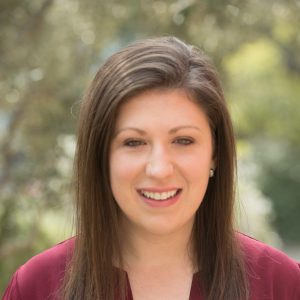
Laurel Edson
Director of Alumni Giving
The Thacher School
What are you either working on now or have recently(ish) wrapped up that you’re most proud of?
At the very start of the COVID-19 pandemic in March, we were in the midst of our young alumni giving month at Thacher. While we normally focus the month as a competition between rival schools, we knew we had to pivot significantly. We found an anonymous community member to match all donations to Thacher to Ventura County Food Share, a local organization supporting food insecurity. The month ended with a record-high participation of 76% young alumni. It was the first time so many faculty members got on the phone and the first time the Head of School offered her own challenge, then volunteered herself for Food Share. Class volunteers stepped up in ways many of them never had. It was truly an entire-school effort that helped fulfill Thacher’s mission of living for the “greatest good.” This gave us the confidence to proceed into the spring to do our first week of giving, which led us to finish the year with 55% alumni participation (up from 47% in 2019), bucking the five-year downward trend. Students are coming back to campus this fall in the safest environment possible because of the collective community coming together.
What do you think is (or should be) the next big step forward for the fundraising industry?
Recruiting and hiring more talent from outside of the fundraising industry to work directly, full-time, in our shops. We can only learn so much from consultants and board members who are not part of our teams’ day-to-day work. I believe this will also lead to much needed further gender, racial, and socioeconomic diversity in our field.
On the flip side, is there anything you believe the industry needs to fundamentally rethink or move beyond?
Industry jargon that does not communicate the impact and nobility of our work (e.g., “major” gifts, stewardship, annual giving/fund).
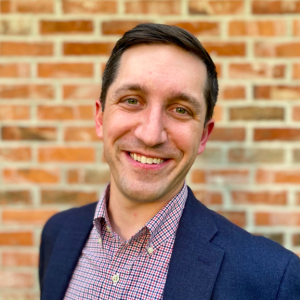
Devin Ferguson
Senior Director of Development
Louisiana Tech University
What are you either working on now or have recently(ish) wrapped up that you’re most proud of?
We are in the midst of an intentional and accelerated move toward data-driven decision making at every level of our organization. Much of the progress to date has been behind the scenes, and I often joke with my teammates that we are flying a plane while finishing the landing gear. Nervous laughter ensues. I am especially proud of how our entire team has embraced quality progress over absolute perfection during this time of change, not to mention in the middle of a pandemic. It has surfaced creativity, new opportunity for collaboration, and greater clarity for the work we do. Above all, we’re focused on building our base of sustaining donors through personal, one-to-one outreach and aggressively engaging new prospects for the future. The potential at Louisiana Tech was palpable before I was ever a member of the Advancement team. I am proud of the foundation we’ve built together, and am excited to see the result of our collective efforts and existing opportunity coming together in real time as we fully embrace this new way despite the tremendous challenges we face.
What do you think is (or should be) the next big step forward for the fundraising industry?
I believe the answer to this question may have changed dramatically within the last six months. Our current crisis has only accelerated long overdue and necessary changes, and those will only catch us up to where other sectors have been for years. The next big step forward must be agility as a necessity rather than a luxury.
On the flip side, is there anything you believe the industry needs to fundamentally rethink or move beyond?
We need to move beyond complication for its own sake. Essentialism and simplicity should rule the day. That may come across as idealistic or naive on its face, but far too often I see us making it too difficult for would-be donors to give their support. Our systems and processes are all too often self-serving, or built around exceptions, which results in a diminished and laborious experience for everyone.
Right now, I can pay my insurance premium with my face on my phone, but I am still having trouble paying a small pledge to a local organization without finding my checkbook or sending my credit card information through the mail. Guess which one of those things is still not marked off of my to-do list?
Will every gift be as easy as two clicks? Of course not. We work for big and complex organizations, doing complex and transformational things. In that environment, it is all too easy to allow our attention to be drawn away from our primary purpose. We join generosity and passion with progress to create opportunities for the future. We should make it as clear and as easy as possible for others to join us along the way.

Tommy Gallagher
Associate Director of Development, Athletics
St. Edward's University
What are you either working on now or have recently(ish) wrapped up that you’re most proud of?
I just wrapped up a fairly large capital project, getting funding to renovate our baseball locker room and hitting facility. I have one other big project in the works currently that I am very excited for; unfortunately it can’t be made public yet. Both projects mean a lot to me for the same reasons: they benefit student-athletes and they help continue to move our storied institution forward.
What do you think is (or should be) the next big step forward for the fundraising industry?
This is a very interesting question because of the current state of the world. The new norms for fundraising have been and will trend toward remote and virtual meetings. However, the positive effect that an in-person, face-to-face meeting has on a alum/donor will be very hard to replace. As a major gift officer, the relationship with an alum/donor is the largest key to helping the constituent achieve their philanthropic goal. It’s hard to think of something that could replace that and be as effective.
On the flip side, is there anything you believe the industry needs to fundamentally rethink or move beyond?
Personally, I don’t think that the alumni participation rate is a viable metric for the success of an institution. As the cost of higher education grows, more students are leaving school with higher levels of debt. The expectation of having a recent grad participate in giving monetarily after they graduate is unrealistic. Institutions need to move past this and find more valuable ways to build their connection with young alumni and keep the affinity there thriving.
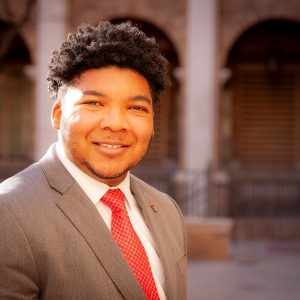
Cameron J. Hall
Senior Director of Annual Giving
Texas Tech University System
What are you either working on now or have recently(ish) wrapped up that you’re most proud of?
Texas Tech University System and its component institutions have not had a strong infrastructure for annual giving and donor relations, but despite not having a strong pipeline flow from annual giving, they have remarkably had strong major gift programs. After a system-wide hiring freeze and some restructuring within Institutional Advancement and Central Advancement, the university hired me to lead and develop annual giving. I’ve been working to build a sustainable infrastructure while also implementing strategies to increase annual revenue and donor engagement. It’s not possible to do this kind of work alone. So, I’m grateful for my small but dedicated staff and for their hard work managing the projects that many of our peer institutions manage with 5 to 10 times the staff size that we have. While we have been growing and changing the program and educating our colleagues, we have definitely experienced our share of internal tensions and growing pains, but these are expected as we work diligently to make our strengths and opportunities outweigh our weaknesses and threats.
One of my greatest accomplishments so far was our 2020 Calendar Year-end campaign, the first marketing campaign that I worked on for TTU. A colleague in gift processing notified me that the campaign brought in checks of $10,000 and $25,000 from donors whose last gift to academics were more than six years ago. Those donors were reacquired with their largest gifts to academics ever, and these gifts prompted our leadership to change our internal definition of annual giving.
What do you think is (or should be) the next big step forward for the fundraising industry?
Our industry needs to embrace technology like AI and predictive analytics that considers both the positive and negative data, allowing for better-informed decisions to guide our work. We need to establish a standard for measuring engagement, especially for our alumni of color, who tend to be more willing to give time as volunteers than financial gifts. We also need to consider changing our organizational structures and positions to meet the new needs of our industry and to break down some of the silos that many of our departments operate in. Many of our departments now have several specialty areas that require new personnel.
On the flip side, is there anything you believe the industry needs to fundamentally rethink or move beyond?
Advancement needs to connect with their colleagues in Admissions to understand how Admissions, the largest revenue department for many institutions, has been able to effectively and efficiently track the affinities of their prospects and use that affinity to convince students to support their respective institutions. Ask them how they are able to implement more effective drip marketing, telemarketing, and digital marketing programs than most advancement shops. How they convinced CFOs to allow them to use CRMs years before we in Advancement were able to make the same case. Ask why so many Admissions offices prioritized the prospective students’ time by accepting the common app for applications instead of the cumbersome online applications of yesteryear. Advancement needs to be as progressive in our approach as our Admissions colleagues have been.
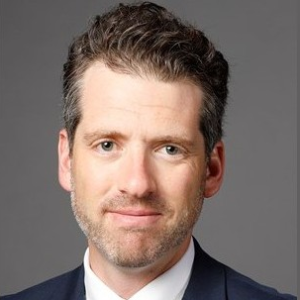
Keith Hannon
Major Gift Officer, Athletics
Cornell University
What are you either working on now or have recently(ish) wrapped up that you’re most proud of?
Not long after jumping into the advancement business as a digital community manager, I soon became interested in the development side of the business. I saw great potential for emerging technologies to equip frontline fundraisers, and I felt much of it wasn’t being utilized. Several years later, I’m now a major gift officer and I have the opportunity to apply digital strategy to high-level solicitations. I believe technology can help us take our benefactors on an engaging and enriching journey that makes philanthropy an experience that goes far beyond a financial transaction. Whereas we talk about the donor cycle as five stages, I try to approach it more as a story arc. The tools to tell that story, and move it along, range from data analytics, mobile phone video, and video conference (Zoom) events. Over 80% of America walks around with a TV station in their pocket; we have to embrace the opportunities that presents and how it enables us to take donors on a journey that’s commensurate with their transformational philanthropy.
What do you think is (or should be) the next big step forward for the fundraising industry?
The next big step is asking for major gifts from a distance. I think gift officers will travel less in the future, while being expected to hit the same numbers (if not more) using phone and video conferencing. The pandemic has forced our industry to adopt practices that would have been unheard of just a few months ago. This will require us to be more creative in how we leverage technology to provide an enriching experience for alumni and donors. If done thoughtfully, I believe it has the opportunity to yield more meetings and more gifts in an era where there’s never been more competition for the philanthropic dollar.
On the flip side, is there anything you believe the industry needs to fundamentally rethink or move beyond?
I think we need to become more comfortable with failure, because if you don’t occasionally fail, you’re not innovating enough.

Carrie Jordan
Associate Director of Development
University of Virginia
What are you either working on now or have recently(ish) wrapped up that you’re most proud of?
I was really proud to play a small role in UVA’s Memorial to Enslaved Laborers. It was a challenging and unique project for our team that required difficult conversations and an innovative approach to development work. The Memorial is helping our university to reshape our culture by examining the stories we tell about our history, and it’s exciting to share in the enthusiasm of our students, faculty, and alumni.
What do you think is (or should be) the next big step forward for the fundraising industry?
I think the next step forward for our industry is to refine how we use virtual strategies to move donors through the major gift cycle. Virtual visits allow us to connect with alumni who we may have missed in former travel, and it represents a huge opportunity for us to both expand our donor pipeline and move conversations forward without having to wait for the next opportunity to meet in person.
On the flip side, is there anything you believe the industry needs to fundamentally rethink or move beyond?
The pandemic has forced our industry to evolve rapidly this year, so it’s time to rethink our definition of a visit. There are so many ways to be creative and provide meaningful engagements for our donors that don’t require being together in person.
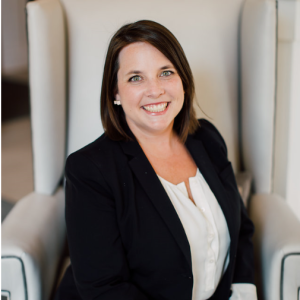
Brittany Kicklighter
Development Specialist
University of North Carolina at Charlotte
What are you either working on now or have recently(ish) wrapped up that you’re most proud of?
This year I was in my first role as a true frontline fundraiser; I was previously in support positions. This was the first year I had fundraising metrics and goals, and my position was newly created. Honestly, I was unsure that the lofty goals were attainable. I had not yet proven to myself if I could apply what I thought I had learned and observed over the years. There also was an extensive amount of navigating through what my role should look like on my team. My bosses are very ambitious and competitive, so to say my goals were slightly intimidating was an understatement. I’m very proud that I exceeded my personal fundraising goal while navigating this new position, and during a pandemic. I asked for bigger goals next year!
What do you think is (or should be) the next big step forward for the fundraising industry?
I think what COVID-19 has taught me most is to be nimble, innovative, and willing to change and listen. Our landscape isn’t the same and our donors likely aren’t either. Being new to frontline fundraising, I always try to begin with a posture of learning first. I’m not sure I know how to move the industry forward, but having a willingness to change and adapt quickly I think is increasingly important. Emerging technologies, like EverTrue, are helping us to try new approaches and be more adaptable for our donors.
On the flip side, is there anything you believe the industry needs to fundamentally rethink or move beyond?
To me there is not a one-size-fits-all method. Our shops need to be a balance between innovative and creative and proven methods and best practices. We can’t evaluate success if we’re always changing what we’re doing, but you can’t reach new donors if you don’t change your approach. I’ve seen different sides try to be all one way or another, but the balance and acceptance of both is what I find to be most important.
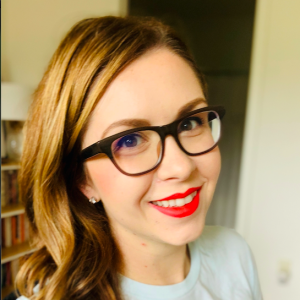
Heather Kopec
Director of Annual Giving
Virginia Tech
What are you either working on now or have recently(ish) wrapped up that you’re most proud of?
My exciting nerdy project is figuring out how to efficiently mail rocks as part of a crowdfunding strategy this fall. HokieStone is a huge part of the Virginia Tech tradition—literally every building is covered in it—and we want to mail a piece of campus to donors. We’re also working on AI-informed strategies to support leadership giving and growing alumni participation while fostering meaningful digital relationships at scale with thousands of alums.
What do you think is (or should be) the next big step forward for the fundraising industry?
There are two critical elements to the next big step forward. First, strive to redefine the philanthropic relation beyond the traditional gift transaction and incorporate a more holistic approach. Second, rapidly adopt AI and automation at every level of the alumni and donor experience to inform a deeper, more meaningful personal connection with individually relevant content and experiences.
On the flip side, is there anything you believe the industry needs to fundamentally rethink or move beyond?
The industry should fundamentally rethink the relationship between the alma mater and the alum in order to drive forward new strategies rooted in consumer behavior. It’s more important than ever to mirror the consumer experience and adapt it to fundraising than vice versa; let’s create a seamless journey and meet alums where they are while reducing the friction to give.
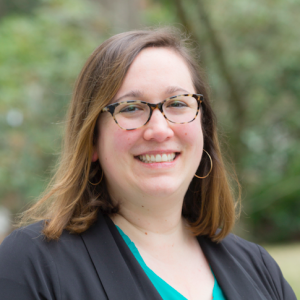
Christi Lumiere
Director of Annual Giving
Bowdoin College
What are you either working on now or have recently(ish) wrapped up that you’re most proud of?
I’m most proud of the staff phonathon we developed for the last three weeks of June, which we lovingly call “ZoomJabberTrue.” This was our first departure from our phonathon software (which can only be used on campus). Jabber was utilized to connect staff members’ work phone lines to their cell phones; Zoom was used to conduct group calling sessions for those who wanted some support; and Volunteer by EverTrue was our data management system. The whole thing ran so smoothly that we’re going to replicate it with student callers this fall and also host some virtual volunteer outreach nights.
What do you think is (or should be) the next big step forward for the fundraising industry?
The pandemic and remote working has forced all of us to be more nimble and innovate quickly. It has also freed up space to be more creative and test new ideas. When we return to “normal times,” I hope we will carry this energy forward. We need to focus on increasing/enhancing personalized experiences. The for-profit sector does this really well and we have a lot to learn from them.
On the flip side, is there anything you believe the industry needs to fundamentally rethink or move beyond?
Phonathon has been a hot topic lately. We’ve seen schools completely shut them down, while others have scaled back significantly. At Bowdoin, we haven’t given up quite yet! Fundamentally, we all know that alumni enjoy interactions with students and that students learn a lot about philanthropy and often become some of our best alumni volunteers. Building off of that and freeing ourselves from the traditional phonathon model, I think we can re-envision a new program that increases alumni engagement and participation in annual giving. We’re piloting our new program this fall—happy to share our findings with anyone who’s interested!
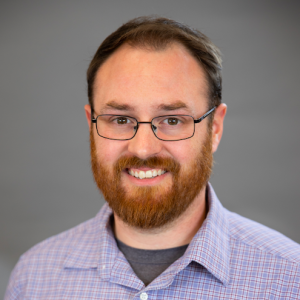
Ryan Marshall
Director of Prospect Development
Concordia University, St. Paul
What are you either working on now or have recently(ish) wrapped up that you’re most proud of?
Our small team of fundraisers is constantly collaborating to make sure they have a shared vision for the prospects that are co-managed. Tracking upcoming activity started in a Google Doc but had to quickly move to Google Sheets. I’m just finishing the first production build of a dashboard with our IT team to track and automatically report out the next steps and assignments they receive on a prospect. I really enjoy taking a concept and shaping it to be scalable, sustainable, and best of all user friendly.
What do you think is (or should be) the next big step forward for the fundraising industry?
The emphasis on transparency in philanthropy will continue to resonate with and be amplified by our future major donors. Blockchain could be an interesting way to give donors visibility into how and when their funds are being used. Smart contracts on blockchain could replace existing pledge agreements to ensure that both parties are still adhering to the terms automatically.
On the flip side, is there anything you believe the industry needs to fundamentally rethink or move beyond?
I’ve witnessed firsthand how focusing on the wrong metrics for fundraising staff can drive the wrong activity and hinder progress. Diversifying the indicators of success to include annual portfolio renewals, measurable constituent engagement, and increased targeted asks all require the familiar activities we are used to measuring. The psychology of fundraising can be more difficult at times than the process itself. Measuring multiple avenues to success allows fundraisers to find what works for them.
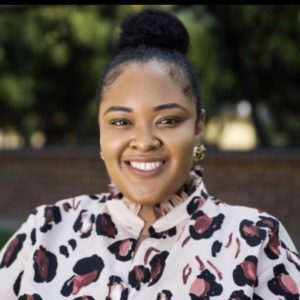
Brittney Miller
Alumni Relations and Corporate Giving Manager
Charles R. Drew University of Medicine and Science
What are you either working on now or have recently(ish) wrapped up that you’re most proud of?
We have done a lot in recent years to engage our alumni community meaningfully and purposefully. The launch of our Alumni Mentorship Program was a significant vehicle in bringing our alumni back to the university and creating a program for current students to gain invaluable resources/insight from our alumni currently working in healthcare. This program matches alumni and current students on a 1-to-1 or 1-to-2 professional relationship featuring opportunities to shadow alumni in their respective fields and exposure to professional networking opportunities specific to navigating healthcare careers as a person of color. The program received the Council for Advancement and Support of Education (CASE) Circle of Excellence Gold Award. This is the first time the university has been recognized by this governing body; it was truly an honor to be part of the development and implementation of a program that will have a lasting effect in our alumni and students’ professional journey.
What do you think is (or should be) the next big step forward for the fundraising industry?
This may be controversial, but it is time the industry becomes more inclusive. As a Black woman in this industry, I am often in spaces where I am the only Black person/person of color in the room. We know philanthropy is a strong vehicle of social impact and change; it is time for the industry to reflect change within.
On the flip side, is there anything you believe the industry needs to fundamentally rethink or move beyond?
I think the industry needs to rethink how we are communicating with our donors, especially during this global pandemic. It is no secret this pandemic has put us in uncharted territory, and our responses have often been in panic mode, but I believe it is important to remember that our donors are equally uncertain and frustrated. The vehicles we have usually used to engage, including social events, can longer happen. We have to remember that human connection is more important now than ever before. Sending donors handwritten letters or calling just to check in with them and their team has greater impact than we can imagine.
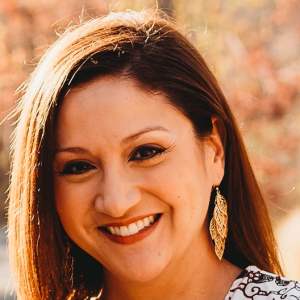
Maria Ochoa
Annual Giving Officer
West Point Association of Graduates
What are you either working on now or have recently(ish) wrapped up that you’re most proud of?
My development team recently wrapped up a major fundraising event that is held annually and it was a smashing success! Each year, all five U.S. service academies hold the All Academy Challenge. It is a five-day-long fundraising event to promote graduate participation, with friendly competition among the service academies and the class years at West Point. Normally it is held in May-June, but due to COVID-19, it was postponed this year to August 16-20. With a bit of uncertainty for the outcome, our entire development team (AGOs, MGOs, and Class Officers) pressed on and worked tirelessly reaching out to our over 50,000 living alumni. Our teamwork paid off and we raised $2.087 million from 11,575 graduates, or 22.2% participation from our living alumni. We were second in participation (Merchant Marine Academy was at 23.5%), but all five service academies saw increases in their participation and cash goals over 2019. We are thrilled for our success for 2020 as well as for the other service academies during this event. As we say each year: “5 Teams. 5 Days. 1 Mission. All Academy Challenge!”
What do you think is (or should be) the next big step forward for the fundraising industry?
The fundraising industry needs to continue to embrace and promote the push for micro-fundraising and targeted grass-roots fundraising from peer-to-peer soliciting. There needs to be an active effort to listen to the graduates and students of our institutions about current social issues and be dynamic. Also, we need to continue to evolve and embrace technology and other methods on how we engage, solicit, and steward our donors. Our world has dramatically changed, but we want to continue to connect in a meaningful way with our alumni. Thus, we need to be fluid and innovative on our approach.
On the flip side, is there anything you believe the industry needs to fundamentally rethink or move beyond?
I think the industry needs to continue to push to expand the potential pool of donors and make a conscious effort to further engage minority alumni and women of high capacity to support the schools. Also, the methods that we steward through in-person development events and around sporting events for the colleges is something that will need to be re-evaluated entirely. Younger alumni do not necessarily want a building named after them or have an expensive dinner for stewardship. These younger alumni want to see the social impact on their alma mater as stewardship and tend to promote experience-driven philanthropic interests, not necessarily brick-and-mortar projects. With that in mind, we have to be dynamic and responsive at all levels of giving and adapt.

Mike O'Brien
Senior Director of Alumni & Family Engagement & Annual Giving
Boston College High School
What are you either working on now or have recently(ish) wrapped up that you’re most proud of?
Our team is in the process of re-imagining our Alumni Homecoming & Family Weekend program and taking things fully virtual this fall. Everything from Virtual Turkey Trots and Family Fun Runs to Local Pub Nights to Career Planning and Financial Literacy Workshops for Young Alumni. Creating meaningful engagement opportunities for our alumni and families paid off big time for us last spring, so we are certainly looking to do it again!
What do you think is (or should be) the next big step forward for the fundraising industry?
In order to stay relevant, the industry needs to continue to adopt new technologies that streamline our operations. And I know that all of us think about how we are expanding our donor pipeline, but do we have someone on the team that is solely focused on new donor acquisition? As we found out this spring, aligning your team with the needs of the organization is critical.
On the flip side, is there anything you believe the industry needs to fundamentally rethink or move beyond?
We need to rethink what we do for those participatory donors at the $50, $100, and $250 levels. Our VP of Advancement recently secured a seven-figure gift, and that donor’s first gift to Boston College High School was 25 bucks about 30 years ago.
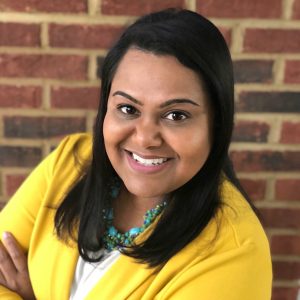
Sarishni P. Patel
Director of Annual Giving
Florida State University Foundation
What are you either working on now or have recently(ish) wrapped up that you’re most proud of?
There are so many amazing things we have going on, but what I’m most proud of is our shift in solicitation strategies to be more donor-affinity driven. As a result, our direct mail has been doing amazing! Pre-COVID-19 (mid-March), we were ahead of the previous fiscal year by 8% in donors and 29% in dollars. We’ve also gotten creative with how we are identifying our audiences beyond their degree affiliation. Working with our research and prospect management team, we are reverse engineering donor profiles to target prospects—especially among our non-donor segments. We have been blown away by our results! I can’t wait to see how this strategy plays out in other channels.
What do you think is (or should be) the next big step forward for the fundraising industry?
I believe we are at a pivotal point in annual giving fundraising where we can’t keep doing what we’ve been doing. Our populations are changing; they expect more from their donations. In order for annual fund programs to thrive, we need to do more stewardship. Tell the story, relay the impact, and create a connection. Whether it is $10, $100, or $1,000—that gift matters. Let’s use technology to steward the masses in an efficient yet personalized way. Ultimately, this is putting the donor first, which is rule number one in fundraising. Also, we need to do a better job with recurring giving. The private sector has been using this strategy for years (think Hulu, Disney+, Netflix), so why haven’t we? Given our our current climate, smaller, recurring gifts may resonate with people more and generate higher retention and increased giving over time.
On the flip side, is there anything you believe the industry needs to fundamentally rethink or move beyond?
Phone calling strategies that are more of a transaction than an engagement point need to go. Sure, calls may take longer and you may not yield the results you are used to, but you are creating a relationship with someone. Embrace the long-game.
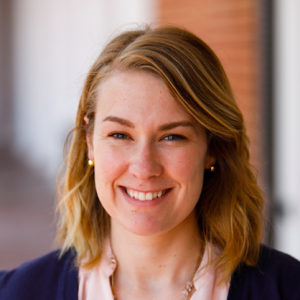
Jessica Robertson
Director of Development
The College Foundation at the University of Virginia
What are you either working on now or have recently(ish) wrapped up that you’re most proud of?
Fiscal year 2020 was my best year in fundraising. Not only did I close five major gifts, but I played a role in an effort to increase our annual fundraising by 15%. This goal was met by empowering our boards to answer an urgent call to support the dean during the beginning of the pandemic. I am most proud of my ability to empower our alumni and parents to engage their peers and raise support for the College at UVA.
What do you think is (or should be) the next big step forward for the fundraising industry?
I truly believe that accurate employment and wealth data and contact information is key to improving the fundraising industry.
On the flip side, is there anything you believe the industry needs to fundamentally rethink or move beyond?
I believe the industry needs to rethink how we can go beyond our institutional walls and work to coordinate and collaborate with other nonprofits and higher education institutions to build strategies for mutual/shared prospects and donors.
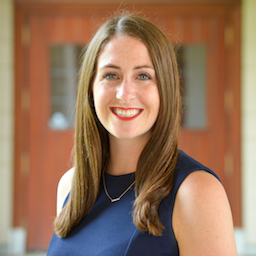
Ellen Roof
Director, Alumni & Parent Giving
University of Notre Dame
What are you either working on now or have recently(ish) wrapped up that you’re most proud of?
We postponed our giving day in the spring due to the pandemic, so it’s been a cool challenge re-imagining Notre Dame Day for the fall semester. I think the timing shake-up has helped us really look into new ways of running the campaign and given us a chance to test things out.
What do you think is (or should be) the next big step forward for the fundraising industry?
I’ve been focused on younger alumni giving for several years now, and there is definitely a correlation between how closely connected someone feels to an organization and his or her giving behavior. With Zoom and other virtual meetings more commonplace now than ever before, I think this is a great step forward to ensuring donors at all levels enjoy personal touch points with their institutions, whether that is in the form of one-to-one stewardship or increased exposure to leadership.
On the flip side, is there anything you believe the industry needs to fundamentally rethink or move beyond?
Fundraising typically incorporates membership benefits or other incentives for giving at different levels, but we need to move away from the “give-to-get” mindset and focus on communicating impact at all levels. It may sounds cliche, but it just plain feels good to give back to causes you care about. If we can remind benefactors that the “why” behind their giving is the desire to make a difference, we can cultivate a generation of loyal donors who always put the cause first.

Kendra Saldana
Assistant Director, Alumni Affairs and Development, College of Architecture, Art, and Planning
Cornell University
What are you either working on now or have recently(ish) wrapped up that you’re most proud of?
I think the project I’m most proud of wrapped up for me personally as I transitioned roles within Cornell, but it was starting our texting program. I worked with a great team of internal partners to get the project started and buy-in for testing it out, and once our first test went well enough to prove an ROI, I was leading the team implementing texting as both an engagement and solicitation tool. We worked really hard to make sure there was a variety of both content and recipients of texts, so that alumni wouldn’t only associate texts from Cornell with asks to donate, and that they wouldn’t be annoyed by volume. I’m particularly proud of two campaigns we ran. One was a “check-in” text for newly graduated seniors, where we sent them a text in the fall asking how they were doing and if there were any Cornell resources that they might be looking for. We had an incredibly positive response—even folks who were doing well and didn’t need a resource expressed gratitude for us checking in. The other recent campaign was the end of this fiscal year, where we texted lapsed donors to renew their gift in order to maintain (or gain) their status in our loyal giving society. We partnered with almost all of our colleges and units to text their single-area donors (e.g., someone who has only given to the Engineering college) with that particular ask. It was our most personal ask to donate, and both donors and our internal partners really appreciated that level of personalization. And, despite the challenges the pandemic presents, that campaign did result in gifts! Cornell’s texting program is now one channel within our larger Communications, Marketing, and Participation team, and I’m really proud of my involvement and that it’s become an official channel!
What do you think is (or should be) the next big step forward for the fundraising industry?
Something the pandemic has taught us is the value of location-independent events, accessibility, and having the mindset to adapt what engagement and fundraising can look like. It’s been incredible to see the response to some of our online events, with alumni reaching out letting us know this was their first Cornell event since graduation, because they’ve been unable to come back to campus, and happy they now can access great content and experiences online. I think this time period has been teaching us how we can effectively and efficiently do our work, and not necessarily be tied down to doing things “the way they’ve always been done.” With fundraising, I think not only can we take some of this adaptability and flexibility forward, but also continue to hone in on storytelling and creative all-channel campaigns. With so much being done to advance our technical tools and abilities, we need to continue to push ourselves to think about how to apply those tools in a holistic, donor-centric, and flexible way.
On the flip side, is there anything you believe the industry needs to fundamentally rethink or move beyond?
One thing I’ve been happy to see start to break down is the silo-ing of work or projects. Some of Cornell’s biggest successes, and projects I’m most personally proud of, come from cross-functional teams where the roles are based on process and skills rather than purely job title or where you sit within the organization. I think continuing to build toward this model will help the industry both in terms of pushing us creatively, and hopefully, retention of amazing staff on teams.
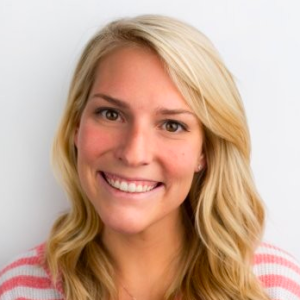
Caitlin Schile
Associate Director of Advancement Marketing
Butler University
What are you either working on now or have recently(ish) wrapped up that you’re most proud of?
The pandemic has forced us to innovate, and consider how we can connect with and engage our alumni in new and interesting ways. This period has been difficult and challenging in a myriad of ways, but it has also made space for us to get creative and dream big. I am most proud of how we’re engaging with alumni digitally and virtually. The phrase “meet people where they are” is used a lot in our industry—right now, it’s our only option. By putting our efforts into digital assets and virtual events, we are truly meeting our alumni, parents, and friends where they are: at home. We’ll be executing our first virtual homecoming this month, and I am very proud of the way our team has worked to elevate the various parts of our campus, and activate alumni near and far to participate in different aspects of the “event.” I’m really looking forward to it!
What do you think is (or should be) the next big step forward for the fundraising industry?
I think we’re going to continue to see opportunity in the data that we’re able to collect, and how we’re able to put that data to good use. There is a lot of information right there in front of us, if we could only get to it! Constituents have expectations regarding personalized marketing, communications, and stewardship in a digital age. Our industry is going to need to figure out how to meet those expectations, and harness that data to work for us in order to better communicate with our constituents. I hope the impact of that change is that we’ll see an end to broad, sweeping communications, so that we can prioritize speaking to individuals more intentionally.
On the flip side, is there anything you believe the industry needs to fundamentally rethink or move beyond?
I’d like for us as an industry to consider how the “standard” titles and industry verbiage (e.g., “planned giving”) do our work a disservice. Are we branding our departments, programs, and individual titles in a way that unlocks doors and makes us more accessible to our constituents? As both a former frontline fundraiser and a marketing professional, this topic has come up from alumni and colleagues on several occasions. I’ve seen some universities making this pivot by innovating titles and descriptions that better indicate to those outside of our industry what we do, and who we serve. I’d love to see this transition in branding across the board.
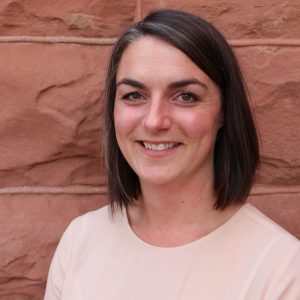
Amanda Schmidt
Director, Leadership Annual Giving
Northern Arizona University
What are you either working on now or have recently(ish) wrapped up that you’re most proud of?
I am working to develop a progressive approach to digital fundraising that helps to support and develop the pipeline to major gifts. I am focused on changing our traditional thought processes to be more experimental in our fundraising approach.
What do you think is (or should be) the next big step forward for the fundraising industry?
AI, online/digital experience officers, professional social media integration. I believe the easier, more accessible, and quicker we can be in front of people, the more success we will have in developing a meaningful relationship with donors who are increasingly busy and marketed to.
On the flip side, is there anything you believe the industry needs to fundamentally rethink or move beyond?
Traditional fundraising metrics. I believe the future of fundraising needs to start shifting the way we quantify success—visits, moves, wealth analysis, etc., are all components to a successful fundraising plan, but there is a LOT more out there that needs to be taken into consideration when determining how to get to the dollars raised and how to continue to grow our donors. I think building a well-rounded relationship, on various platforms, is critical. I think justifying costs and impact in a bigger way is undervalued. I believe stewardship and donor relations are a drastically underfunded component to our roles. There needs to be room and investment in these areas for us to continue to cultivate the next big gifts. Development officers should be cultivating their next ask, through stewardship, the moment they secure any gift they receive.
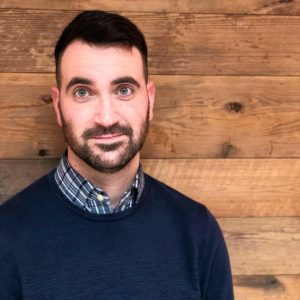
Alex Spady
Prospect Analyst
University of Oregon
What are you either working on now or have recently(ish) wrapped up that you’re most proud of?
About a year ago, the University of Oregon had the grand opening of its Black Cultural Center. This space offers academic services, along with educational and cultural programming for students and the community. Recently, our annual philanthropy team had a short crowdfunding campaign to help cover programming costs for the Black Cultural Center. I utilized EverTrue’s social media tools to help find additional donors for this campaign. I searched historical Facebook posts to see which constituents engaged the most with Black Cultural Center articles. This additional prospecting work increased the solicitation pool size from 200 to more than 1,000 individuals, and we ended up surpassing our goal of $20,000 for the program.
What do you think is (or should be) the next big step forward for the fundraising industry?
Better data that is used strategically. We can’t just focus on collecting data and maintaining data integrity. We need to use the data as soon as it becomes available to inform cultivation strategies.
This spring, shortly after transitioning to working remotely, the University of Oregon recently created a digital event series called Voices of Innovation and Impact. This series highlights the UO’s innovative approach to solving some of the world’s biggest problems, beginning with the COVID-19 pandemic. Instead of just collecting the event attendance data and having it sit in the database, we developed a process that allowed us to analyze, segment, and disseminate the entire group of attendees to frontline fundraisers and engagement staff. Through this process, we reviewed events holistically, instead of only focusing on the donors with established relationships. As an industry, we need to leverage data quickly and strategically to produce tangible results to engage and move donors through the entire pipeline.
On the flip side, is there anything you believe the industry needs to fundamentally rethink or move beyond?
We need to rethink our approach in engaging Millennial donors. We can’t neglect the next generation of donors just because they aren’t ready to give yet.
We often spend so much time cultivating and soliciting donors of older generations that we lose sight on the untapped potential of Millennials. Research has shown that Millennials overwhelmingly care about societal issues and philanthropic causes, but they may not donate at the same level as older generations. Millennials have overtaken Baby Boomers as the largest generation and will soon be on the receiving end of a massive wealth transfer from their parents. Before this transfer has happened, let’s foster a relationship with Millennials so they feel connected to the cause.
We need to move beyond discussing how to engage and actually follow through with engagement. Start by sitting down with up-and-coming alumni and ask them how they want to be engaged. Invite them to volunteer with their peers and have them become active participants in your organization. In addition, embrace newer ways to communicate with them. No more telethon/telefund calls—they aren’t going to answer an unknown number.
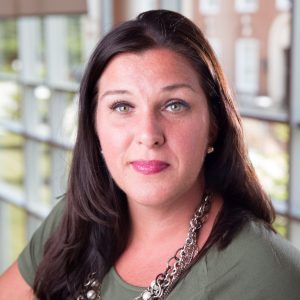
Jodie Sperico
Executive Director, Alumni Relations
Adelphi University
What are you either working on now or have recently(ish) wrapped up that you’re most proud of?
Adelphi’s Women’s Leadership Conference is a great source of pride for me. Created in 2017, the annual gathering of students, faculty, staff, and local community members has quickly become one of Long Island’s premier leadership, networking, and training meetings. In 2019 we added a track for local high students as a way to create meaningful mentoring relationships and a pipeline of future leaders.
What do you think is (or should be) the next big step forward for the fundraising industry?
There should be a stronger corporate commitment from industry leaders to fund programming related to social justice on college campuses.
On the flip side, is there anything you believe the industry needs to fundamentally rethink or move beyond?
We need to stop apologizing for “asking.” As the number of American donors decreases each year, the need for financial support has never been greater.
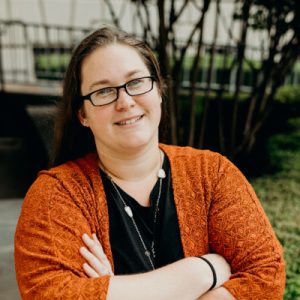
Kellie Sullivan
Associate Director of Special Programs
The University of Texas at Austin
What are you either working on now or have recently(ish) wrapped up that you’re most proud of?
We have recently integrated texting into our program. Adding a new channel isn’t something we have done since we added crowdfunding and giving day. It has been an adventure getting to seek out best practices and ideas from colleagues across the country, and everyone is figuring it out as we go. We are using texting for traditional solicitations, but I have enjoyed working with our campus partners to grow it to include other important engagement touch points, and I am excited to see the potential for major gifts. Our leadership giving team has been using it to schedule meetings with prospects with great success. I am excited to see how it can grow in the next five years across development.
What do you think is (or should be) the next big step forward for the fundraising industry?
The most important thing we can do as an industry right now is embrace the changes being handed to us by 2020. All of the technology and tools. Engaging prospects who have never been able to attend an in-person event. Remote work to retain staff who may have left our organization but now have the option to stick around. Many of our organizations may have taken a long time to embrace these changes, so let’s make sure they stick around to benefit the long-term growth of our organizations.
On the flip side, is there anything you believe the industry needs to fundamentally rethink or move beyond?
We need to invest in the talent pipeline of this profession.
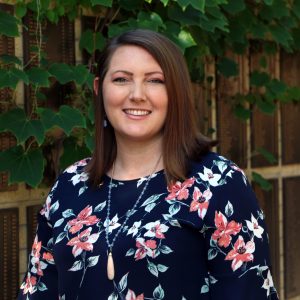
Leanna Swart
Director of Annual Giving
Austin College
What are you either working on now or have recently(ish) wrapped up that you’re most proud of?
I’ve had the opportunity to strategize and manage several matching gift campaigns at Austin College. This spring I ran a six-week matching gift campaign challenge, surpassing our goal and raising $1.1 million that supported student services and scholarships. Writing content, hand-crafting campaigns, and shining a light on what our alumni enjoy supporting is something I am extremely proud to work on.
What do you think is (or should be) the next big step forward for the fundraising industry?
With all the recent changes to our world, higher education fundraising will be impacted drastically. I believe we must refocus our fundraising efforts back to the basics: our students. The annual fund has never been more vital to meeting new on-campus needs and providing student support, all while our donors’ lives are changing just as quickly. Patience and flexibility when it comes to strategic planning will be essential for success moving forward.
On the flip side, is there anything you believe the industry needs to fundamentally rethink or move beyond?
Assuming that our young graduates automatically feel a sense of philanthropy and loyalty toward higher education is something I believe we need to rethink. Social media, digital content, and even travel is much more accessible now and our young graduates are being pulled in multiple directions with their limited expendable funds. Crowdfunding and subscription-based fundraising are certainly a step in the right direction for this population!
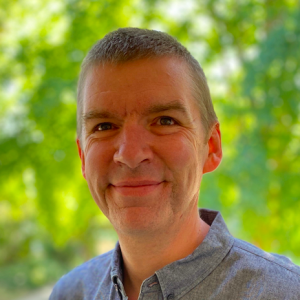
Nicholas Teff
Senior Data Scientist
University of Iowa
What are you either working on now or have recently(ish) wrapped up that you’re most proud of?
We are working on a new AI-driven prospecting tool for the Leadership Annual Giving (LAG) program at UI. We want to solve what prospect identification, relationship management, and prospect management looks like at scale. It has been an open collaboration between Annual Giving, Prospect Management, and Major Gifts. On one end, we need a flexible tool for the LAG officers to do personal outreach to 1,000+ people per year at the right time, with prompt follow-up, and respects the current work of Major Gifts. At the other end, this needs to be automated so the team spends time making human connections and not slogging away in the CRM. So far, the results are great! The LAG team doubled their productivity in the first month and we are developing a web-app version of the tool.
What do you think is (or should be) the next big step forward for the fundraising industry?
In my opinion, the biggest issue for higher education is solving the funding problem. I think fundraising should be part of that conversation. For many reasons, the cost of higher education has been growing much faster than inflation. Over the past 30 years, after adjusting for inflation, the cost of college is now two or three times what it was in 1990. We know the importance of need- and merit-based scholarships, but a broad goal of increasing accessibility by reducing the costs is important. We now have a generation of young people with $1.5 trillion in education debt, and many are living through a second economic crisis. The country cannot afford to have a second generation held back by debt.
On the flip side, is there anything you believe the industry needs to fundamentally rethink or move beyond?
The process of making a gift just needs to be easier. It needs to be easier for programs to tell their story and ask for support. It needs to be easier for people to find their passion and make an impact. There is plenty of evidence that this can be done, and even modest donors when combined at scale can generate more than enough support. How can we move an industry that is long reliant on long-term 1-to-1 relationship-building move to a world where impact and connection is made faster and with so many more? We already know the stories are there, so now we need to learn how to tell the story at scale.

Anthony Thomas
Executive Director of Development and Strategic Partnerships
New York University School of Law
What are you either working on now or have recently(ish) wrapped up that you’re most proud of?
I’m really proud of what our team accomplished over the past fiscal year, given the current environment. We were able to quickly adapt and we exceeded our annual and overall goals. I’m also proud of all that’s happening with the NYU Law Venture Fund, one of the first to exist at a law school in the country.
What do you think is (or should be) the next big step forward for the fundraising industry?
I think the fundraising industry needs to continue to invest in meaningful digital engagement strategies that use technology in a way to personally connect with donors. Our supporters expect deep personalization, and we need to meet those needs.
On the flip side, is there anything you believe the industry needs to fundamentally rethink or move beyond?
The old and traditional way of engaging alumni through in-person events only is dead. We’ve all been forced to rethink that, and I am excited to see what emerges.
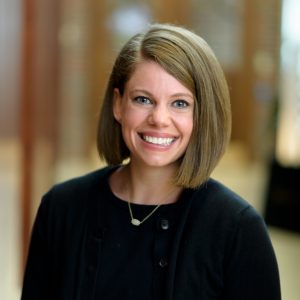
Amber Turner
Executive Director for Annual Giving and Stewardship
Purdue Research Foundation
What are you either working on now or have recently(ish) wrapped up that you’re most proud of?
Due to the pandemic, Purdue Day of Giving was postponed from April 29 to September 9. The decision was made to continue with our plans, including the gamification element of our giving day, to rally the Purdue community and change the narrative. The results were nothing short of extraordinary. The Purdue family demonstrated what can be accomplished when we all come together, as the 24-hour social media-based event—now in its seventh year—raised $42.2 million from more than 20,200 gifts. Our team performed an audience analysis, developed multiple contingency plans, changed the tone and the cadence of communications—utilizing networks differently, demonstrating value, and promoting user-generated posts—but kept the heart of the day intact. I’m incredibly proud of the persistence and thoughtfulness of our annual giving and stewardship team; the way our entire development and communications community came together to champion this event; and the incredible generosity of Purdue alumni, faculty, staff, retirees, students, parents, and friends.
What do you think is (or should be) the next big step forward for the fundraising industry?
Delivering a modern digital experience is more important than ever. We’re in a digital-first landscape and need to be adaptable to that environment, providing constituents the opportunity to customize their experience and engage with audience-specific content across all channels. Through university-wide coordination, we have the ability to provide constituent-centered communications (through university, consumer, and engagement data) that will increase conversions and decrease the number of messages and opt-out rates. To achieve these results, we have to make it a priority to be less institutional and on our calendar, and instead more consumer focused—individualizing, personalizing, and customizing our solicitations and messaging.
On the flip side, is there anything you believe the industry needs to fundamentally rethink or move beyond?
Constituents make a decision on an organization based on their experience as a whole, not just with one department. Therefore, in order to deliver a holistic, constituent-centered approach, we need to see the full view of communications to a prospect, deliver an optimized path, and cultivate their relationship. One of the many ways we can do that is through social engagement. No longer can it be considered a channel that we utilize for a post to follow-up a fundraising campaign. Instead, it should be part of the comprehensive communications calendar and considered a high priority. We must design each platform for engagement optimization: Facebook for information, Twitter for connecting with our audience and building relationships, and Instagram for showcasing visible elements like photos and videos. We must get our followers interacting with our messages, and make it a priority to respond to as many as possible. Engagement is valuable data that helps us drive other communication vehicles, and relationships, and has the ability to shorten the donor continuum cycle. Therefore, we must work harder to rethink our strategy and consider the end-users’ perspective and integrate our data and communication opportunities. Additionally, the data we mine from constituent engagement will allow us to maximize our ability to customize and personalize broad-based communications, which would help us abandon the blanket message model and further increase results.
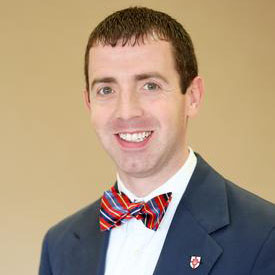
Jason Vaughan
Director of Development
Union University
What are you either working on now or have recently(ish) wrapped up that you’re most proud of?
Union is about to celebrate our bicentennial (2023) and embark on a comprehensive fundraising campaign to support a year 20 campus master plan. Our advancement office is just beginning the planning process that will help fund the future physical layout of campus and guide the direction of the university for generations to come.
What do you think is (or should be) the next big step forward for the fundraising industry?
Finding new ways to leverage the technology and social media platforms that we have been mostly forced to work closer with this year is a must. The social media tools and communications technologies have been there for a while, but how many of us are really embracing the information to be gleaned and deploying it for the benefit of our institutions?
On the flip side, is there anything you believe the industry needs to fundamentally rethink or move beyond?
I would love to see more thought about how to reinterpret phone bank or phone-a-thon methods. While trends may show declines in effectiveness, value could still be found if incorporated with new ideas regarding social media platforms and video technologies.
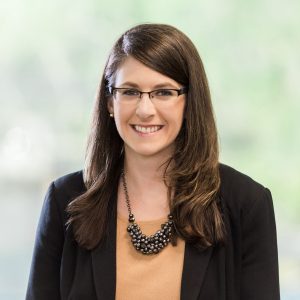
Kim Walz, CFRE
Senior Director for Advancement, Prospect Development
University of Central Florida Foundation
What are you either working on now or have recently(ish) wrapped up that you’re most proud of?
Together with our partners in ITS we are in the final stages of integrating a dynamic scoring process/script within UCF Advancement’s CRM database that applies the algorithms from five predictive models that utilize a variety of data points, including engagement from EverTrue, in scoring records quarterly, or ad hoc. To track the velocity of scores and better understand the related activity driving changes in the data, we partnered with ITS to create a dashboard that surfaces actionable insights into prospect behavior that will provide highly targeted qualification/discovery lists for our forward-facing colleagues. This project is but one example of several cross-departmental initiatives currently underway across multiple teams, and seeing these collaborative projects provide value to the greater Advancement team is what I am most proud of.
What do you think is (or should be) the next big step forward for the fundraising industry?
With so many technological advances underway within the industry, a continued move toward going “back to the basics” of fundraising and relationship development will help to propel and inspire big gifts, while building trust with donors and community stakeholders. People give to people, and strong relationships built on listening, partnership, and connection will continue to be paramount to moving the industry forward with technology as a platform for communication, prioritization, and efficiency.
Where do you get inspiration for your work?
As a team, inspiration for our work comes from a balance of listening to our forward-facing colleagues share thoughts and feedback on processes, services, and deliverables; benchmarking with industry and aspirational peers (we LOVE to talk shop with other Advancement Services teams!); industry conferences, podcasts, books, and listservs; and working with innovative vendors who drive us to reconsider how we do business to better serve both our internal clients and external beneficiaries. For me personally, inspiration comes from the question, “What if?” I had a professor who asked his students to constantly challenge assumptions and push boundaries through this simple question, which has changed the course of many projects I’ve worked on for the better. Inspiration also comes from working with an amazing team that is passionate about the work they are doing with a steadfast commitment to striving for excellence through efficiency and customer service.
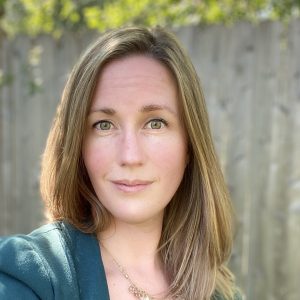
Jennifer Welsh
Director of Development Operations & Research
Siena College
What are you either working on now or have recently(ish) wrapped up that you’re most proud of?
This year has been unlike any other. The pandemic has really transformed what I’ve been able to work on the last six months and it’s still changing daily. Like most, we had to quickly transition to working remotely, enhance our online presence, convert events to virtual, and of course do more with less resources. Our teams managed to come up with some really great marketing and event series that I’ve been able to work on, and of course my favorite—I’ve created some new reports to make working remotely easier and more efficient for my team, while incorporating new audits to catch errors. I see a lot of data cleanup projects in our near future, and am looking forward to creating new dashboard reports for the development office to use to make more informed decisions in our ever-changing landscape.
What do you think is (or should be) the next big step forward for the fundraising industry?
I think the next big thing is going to be using artificial intelligence to create an ultra-personalized experience for donors. People want to know that you know who they are and what they are passionate about (and what they’re not), and unfortunately, relying on the donor to give us these details isn’t an option. Just look at your alumni database and see how accurate the employment information is—historically it’s one of our least accurate data points because it’s constantly changing and it’s not a top priority for alumni to feed updates to us. For this to become a reality we’re going to need to start by collecting more and better quality data that will help to show us who our donors really are. These data points can’t stop when they leave campus, we need to realize that they are constantly evolving and find a way to capitalize, track, and analyze quickly to make personalized experiences to keep donors engaged and interested in supporting what we are doing.
On the flip side, is there anything you believe the industry needs to fundamentally rethink or move beyond?
I think that the COVID-19 pandemic has actually forced us to move past the old way of doing things and move forward with the rest of the world into virtual connections. We’re beginning to meet people where they are, instead of relying on the way we’ve always done things. I think the industry on a whole needs to continue to adapt with technology to engage constituents in a way that is meaningful to them. Perhaps taking a look outside of the nonprofit world at how corporations are already doing this, and realize that we might need to spend more money and make larger investments in technology that will allow us to grow into the future.
